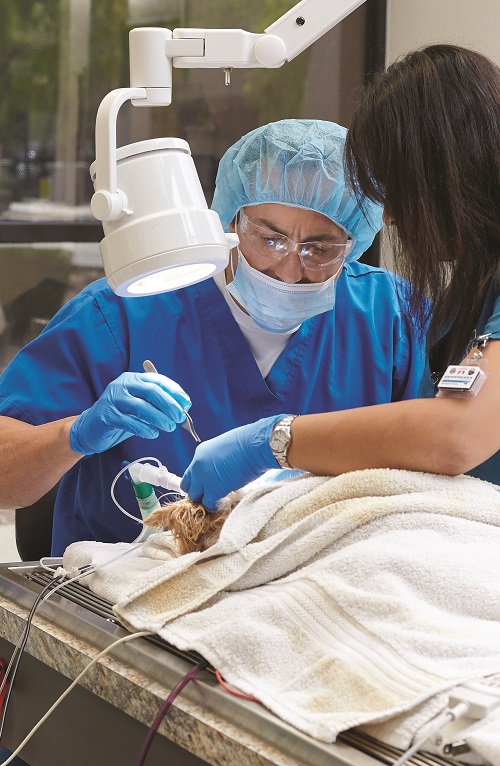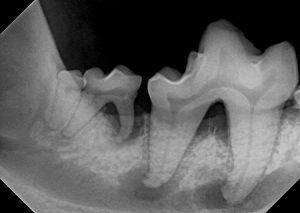
Dental Health
Imagine what your mouth would feel like if you never brushed your teeth or went to the dentist. For many dogs and cats, this is a painful reality. According to the American Veterinary Dental Society, more than 80% of dogs and 70% of cats have dental disease by the age of 3. Dental (or periodontal) disease is the most frequently diagnosed health problem in pets.
Common signs of dental disease include:
- Yellow or brown buildup (tartar) on the teeth
- Red, swollen, or bleeding gums
- Bad breath
- Excessive drooling
- Changes in eating or chewing habits
- Pawing at the face
- Loose teeth
- Depression
Even if your dog or cat doesn’t have these symptoms, we recommend that you have a veterinarian evaluate your pet’s dental health at least once a year. Bacteria and food debris accumulate around the teeth and, if left unchecked, will lead to deterioration of the soft tissue and bone surrounding the teeth. This decay can result in irreversible periodontal disease, tooth loss, and possibly expensive oral surgery. Many pets that exhibit oral discomfort will not show owners outward signs until the pain is significant.
Dental disease can also affect other organs in the body: Bacteria in the mouth can get into the bloodstream and cause serious infections in the kidneys, liver, lungs, and heart. If these problems aren’t caught and treated quickly enough, they can result in morbidity.
What to expect when you bring in your pet for a Dental prophylaxis:
- Full mouth x-rays
- Preoperative blood work to make sure your pet is a safe anesthetic candidate
- IV catheter/fluids
- Anesthesia & monitoring
- Charting and sulcus assessment
- Routine dental cleaning, scaling and polishing
- Extractions if needed (Determined by x-rays and assessment by the Veterinarian)
This is an example of the importance of oral x-ray’s. The first x-ray on the left shows two normal molars on the left side of the mandible. The x-ray on the right hand side shows the larger molar having both roots that are abscessed ( look at the large black circles ) and severe bone loss underneath the neck of the tooth. The smaller molar on this same x-ray exhibits an abscessed root as well ( look at the large black opacity all around the root).
If this patient hadn’t had oral x-rays as part of their dental prophylaxis these two painful teeth would simply be cleaned and polished and left in this patients mouth to continue to cause oral discomfort.
Once we get your pet a clean set of teeth, we recommend C.E.T Enzymatic Oral Hygiene Chews for both dogs and cats to assist in removing tartar in between dental cleanings.
Schedule your pet’s dental exam today!


